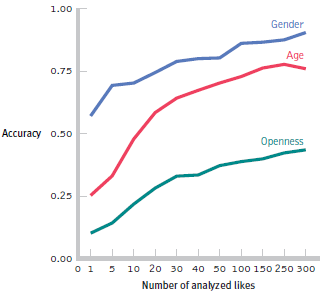As part of their study on the relation between rejection and depression in adolescents (Nolan, Flynn, &
Question:

a. Create a scatterplot of these data. Be sure to label both axes.
b. What does the scatterplot suggest about the relation between these two variables?
c. Would it be appropriate to calculate a Pearson correlation coefficient? Explain your answer.
d. Construct a second scatterplot, but this time add a participant who scored 1 on externalizing behaviors and 45 on anxiety. Would you expect the correlation coefficient to be positive or negative now? Small in magnitude or large in magnitude?
e. The Pearson correlation coefficient for the first set of data is 0.65; for the second set of data it is 0.12.
Explain why the correlation changed so much with the addition of just one participant.
Step by Step Answer:

Essentials Of Statistics For The Behavioral Sciences
ISBN: 9781464107771
3rd Edition
Authors: Susan A. Nolan





